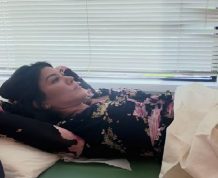When you and your partner are trying to get pregnant and conceive a child, it will be extremely helpful to know what are the signs of ovulation are. You will also want to know about specific symptoms as well to look out for. Claim Your 20 Free Ovulation Tests – Click Here
Not to mention, if you are intending to be precise with your predictions which you likely are, you will need to start doing some record keeping. Measuring your temperature is a key factor in knowing when ovulation will happen, and more about that will be discussed later. Therefore, once you get to know the symptoms, you will be able to start predicting when ovulation will likely occur.
If you are having trouble getting pregnant, the first thing to do before panicking is make sure you know your cycle very well. The fact of the matter is that most couples don’t actually have to go to a great deal of trouble to conceive. Those couples are obviously fortunate enough not have any fertility problems.
In most cases, if couples are having unprotected sex in the middle of the female cycle more than just once a week, things normally go pretty smoothly. Approximately 80 % of couples will conceive a baby in no more than a year!
However, if pregnancy has not occurred within a year of trying, then there may be a problem. That will be discussed much later on, however let’s assume there are no problems other than you not being familiar with your cycle.
Increasing your fertility and increasing your chances of getting pregnant can be done by timing your baby creation efforts with the woman’s cycle. If you are aware of ovulation symptoms, and more importantly if you know exactly when ovulation occurs, you are ahead of the game.
However, before jumping into the game of trying to conceive a baby, there are tips to keep in mind before you even start looking for ovulation symptoms.

Make an appointment to talk to your doctor about your plans for getting pregnant. This gives you the chance to ask any questions you might have. You will also have the opportunity to receive basic instructions as to what your next steps should be. In fact, you will want to make sure your health is good enough to start trying, and only your doctor can give you the green light if it is.
Unfortunately, if your weight is not ideal- whether you are overweight or underweight, that will have to be changed before even trying to conceive. Your blood sugar and blood pressure will be examined as well. If there are issues with either, you will need to make changes and receive the right treatment if necessary.
Your doctor may refer you to a dietitian or nutritionist if necessary. And he or she will also examine you for any kind of infections, whether they are sexually transmitted or not. If you have an infection and aren’t aware of it, then you will need to be treated before you start to work on conceiving that baby.
Once that is all taken care of, then you will likely receive the go ahead to start trying by your doctor.


A woman’s body is truly an enigma. Subtle changes can mask much greater things and therefore you may not know what is truly happening. If you are ready to start knowing your body inside and out, pay attention to what the indicators are that you are ready to ovulate.

There is usually a slight body temperature change either at the time or just after ovulation. It is not noticeable enough to feel it by usual methods such as placing your hand on the forehead. The temperature change is usually less than a degree in Fahrenheit.
For getting it right you would need to use a thermometer, but not just any kind. The thermometer that you will need is the basal body thermometer. Your local drugstore sells them. Go and buy one as they are inexpensive.
Be sure to get into the habit of taking your temperature at the same time daily, and recording it. This makes it easy to see the patterns of what is happening in your body. One of the most stable and efficient times to take your temperature is actually when you wake up each morning and before you get out of bed and start moving around. That will provide you the most accurate reading.
Always keep in mind that you must not take your temperature if you are sick in any way. Fevers and flu’s will affect your temperature, and there will be no accuracy as a result. In fact, if you are ill, that will have an impact on whether you ovulate during a cycle or not. Unfortunately that means that particular month will have to be written off if you are trying to conceive.

Another ovulation symptom is a change in the texture of cervical mucus, and in fact this one is extremely important to know. Around ovulation, most women report their cervical mucus feeling different. It has a different appearance, and is best referred to as becoming stretchy and thicker. Do you know why this would happen? This change in mucus prepares for the man’s sperm by providing the best possible environment for it to survive and move easily. In fact this is the easiest ovulation to spot, even over a raised temperature.

These differences to your cervical mucus is most often the first sign you will get to symbolize ovulation is coming. Be on the lookout to the change in mucus during your cycle. The thicker it gets, that is a sign that it is time to start getting busy.

Paying attention to your cervical place is likewise one of several common ovulation symptoms women may take notice. You can do this by placing one or two fingers within your vagina and feel the cervix opening. When ovulation is not happening, the cervix is relatively firm and dry. Therefore it is usually uncomplicated to reach due to its lower place. The opening may really feel closed. The cervix gets succulent and delicate in the event the ovulation period commences along with the entrance will feel open. During the height of your ovulation period, the opening in the cervix will extend to its largest. Therefore, it is somewhat challenging to get to use your fingers.

Another ovulation symptom to look for that can sometimes be hard to miss is a slight ache or pain in the uterine area. This pain is best described as a mild cramp or even similar to period pain. The term for this ache is called, Mittelschmerz. That is the German term for lower abdominal soreness that many women experience when ovulating. This pain is normally felt right at the moment of ovulation.
It can last a few hours, even a few days, or maybe even just a passing feeling. Because the ovaries are at the sides of the uterus, the feeling is also slightly to one side.
However, if you do not feel any kind of ache, don’t think you are not ovulating either. Many women do not feel this pain either.

There are some amazing resources online in the area of ovulation calendars. Many smartphones also have plenty of apps that can help you predict precisely when you are ovulating. That can certainly be helpful to you. The longer you use them, and the more data they collect the better the ovulation predictions become as well. Once you can match up your ovulation dates with the physical world confirmation of physical ovulation symptoms then it time to get to work.


Not only is it important to recognize when ovulation is happening, sexual intercourse must be attempted at the right time. The best time to have intercourse in the effort to get pregnant is before a woman begins ovulating! Not after. The reason for this is because the sperm has the ability to survive for 2-3 days, which gives it plenty of time to wait until the egg is produced. That is when it is best for the egg to be fertilized. Because waiting until after ovulation doesn’t work due to the fact that the egg dies off in 24 hours, and that being said, the month will end up being a write off.

Most of the time what was described above can tell you when you are ovulating. However at the same time, you cannot always rely on the symptoms written above when it comes to ovulation. Keep in mind that other factors can cause a spike in temperature, even a change in mucus and a pain on the side.
Sometimes activity levels from previous days can affect temperature, and infections can also change vaginal mucus texture such as a yeast infection. Many issues can cause aches on the sides as well. That being said, take all of that into consideration too.
If you are also unable to rely on the symptoms noted above, there are other ways you can monitor your ovulation.

Many woman chart the days when ovulation occurs each month and use that as a guide to figure out when their next cycle will occur. Unfortunately, not all women ovulate at the same time on a monthly basis. Instead, for those women who are irregular- is it best for them to invest in an ovulation kit, which is designed to detect a woman’s LH (luteinizing hormone) levels. By monitoring these levels, couples can easily figure out days before when ovulation is most likely to occur.


While timing is everything, engaging in intercourse at least three times a week boosts the odds of being able to get pregnant, regardless of when a woman’s ovulation cycle is.

Certain sexual positions have a better chance of allowing sperm to fertilize an egg. The missionary position is ideal. Women should avoid being on top as well as getting up too soon after sex. Remain lying down and give the sperm some time to remain in the vagina.

Some couples try so hard at getting pregnant that the act of sex becomes a chore. Do your best to make sure each attempt at intercourse is one that both you and your partner enjoy-this makes for a much more natural occurrence of transferring sperm into the vagina without the stress or pressure, which can lead to performance anxiety or even a decrease in sex drive.


As stated above, the woman’s body is an enigma. That means so much is going on that would boggle anyone’s mind. At the same time, remember that a woman’s cycle is delicate. Anything can get into the way of ovulation from happening, and that is when periods can be skipped.
Anything can mess the cycle up that involves changes in weight, sickness, extreme stress of any kind whether it may be mental, physical or emotional. If you started an exercise regime, that can also mess up the cycle. Therefore, ovulation will not likely happen if any of the above has been experienced. In those cases, you may not even get a period the following month, and find yourself skipping a month or two. It does happen.
Therefore, if you are looking for signs of ovulation but none of it is happening, and you have experienced anything mentioned in the paragraph, don’t worry. You can try when your body becomes stable again.
However, if you have been trying to conceive for a year without success, and have been paying attention to ovulation symptoms, it is then time to consult a doctor to look into what is causing the issue with fertility. Sometimes a minor boost is needed.
Either way, get to know your body and best of luck achieving that pregnancy you have always wanted.










Comments